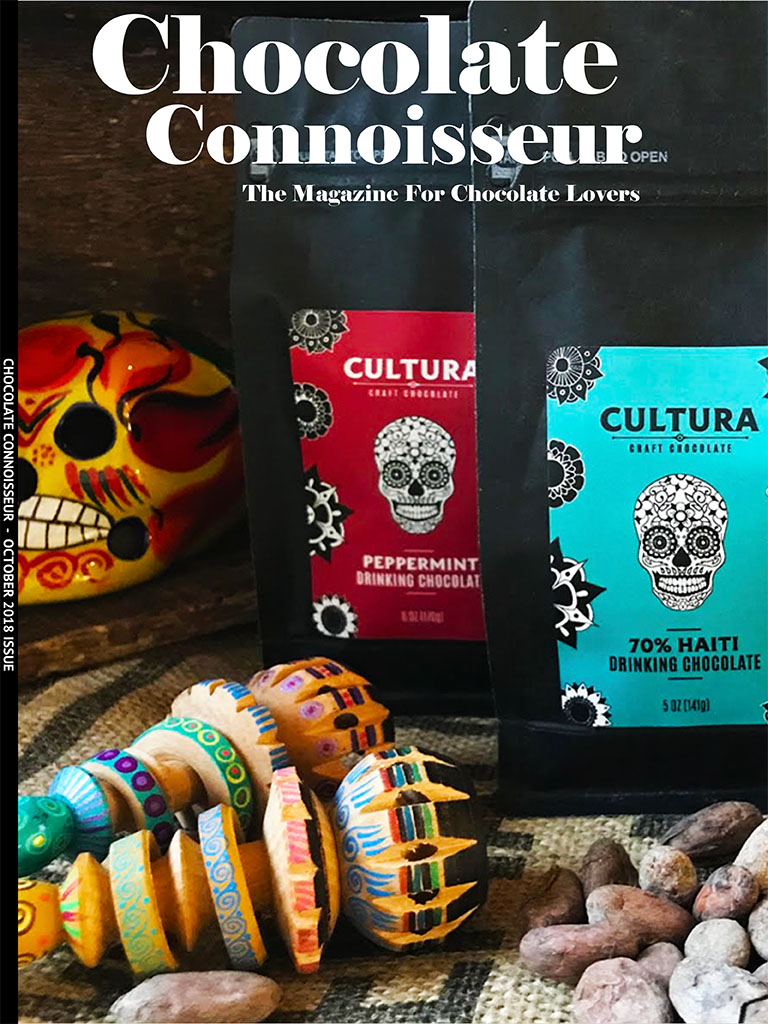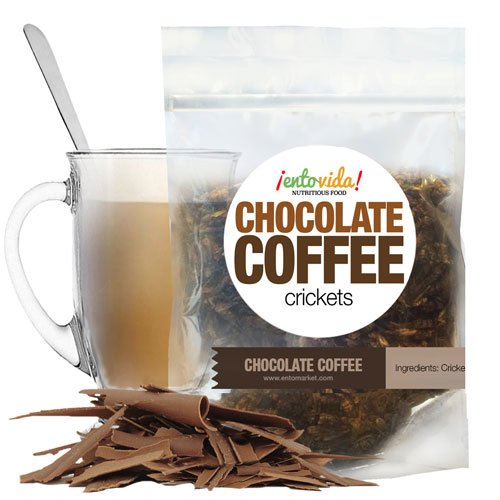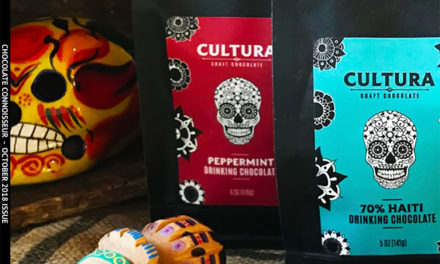In honor of things creepy and crawly this Halloween season, we’re delving into the world of something a bit unexpected… insects.
Put Some Chocolate On It
But not just any insects… chocolate-covered insects, of course, and, although it may seem strange or off-putting to some people, the fact is many cultures have been eating insects for centuries. In fact, the United Nations (U.N.) tells us there’s an estimated two billion people around the world who regularly eat insects. Yes, there’s even an official name for it: entomophagy. US News and World Report lists nine countries that take part in this tradition including but not limited to, Thailand, Ghana, Mexico, China, Brazil, Australia, Japan, the Netherlands, and — perhaps surprisingly — the United States. Eating chocolate-covered insects probably hasn’t been around as long as eating bugs “au natural”, but who knows… maybe the Mayans whipped up some xocolatl (their version of chocolate) with a prevalent insect of the time, and had a nutritious dinner to boot. If they did, however, it was likely an uncommon occurrence, or at least nothing like today anyway. With time comes progress, and humans combine chocolate with bugs more and more often, which seems like a step forward to me, even if I can’t muster the courage myself to eat something like, say, an insect truffle collection.

I interviewed the owner of Cultura, Damaris Ronkanen (pictured here), last year when she first began to experiment with insects and chocolate. Her desire to explore this combination stems from an interest in the traditional part of Mexican cuisine, which, incidentally, permeates the essence of the entire Cultura brand, not just her insect truffles. Specifically, her own experience during childhood trips to her family’s hometown in Mexico inspired her to both honor and share the history and culture of the communities where Cultura’s cacao originates.
Cultura’s Own Edible Insects
Happily I can report that, in a little over a year, Damaris’ own curiosity and ambition resulted in the product pictured below.
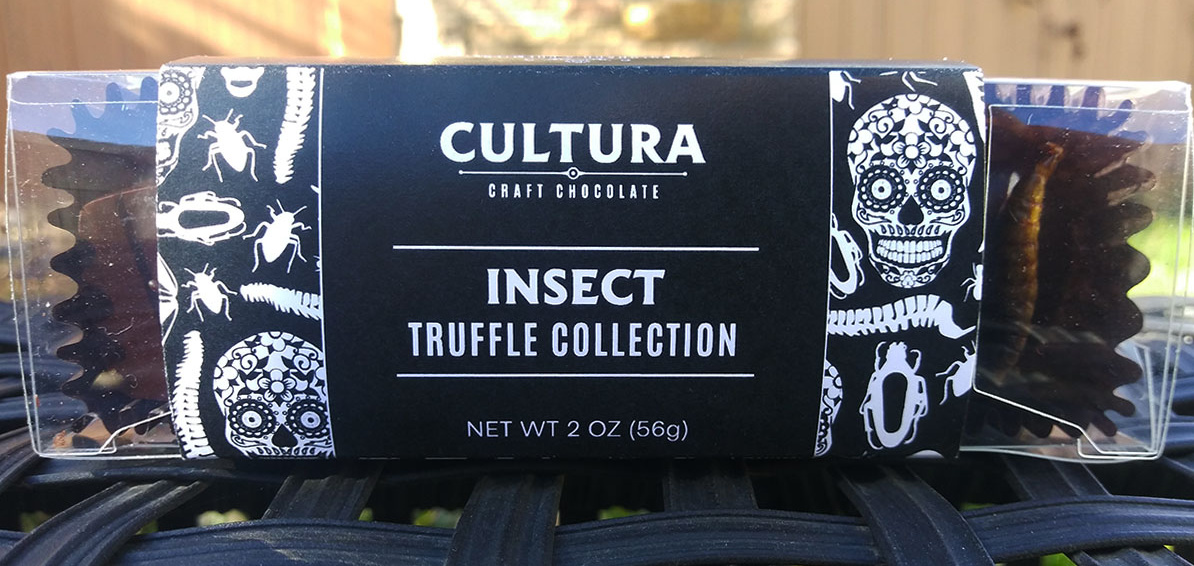
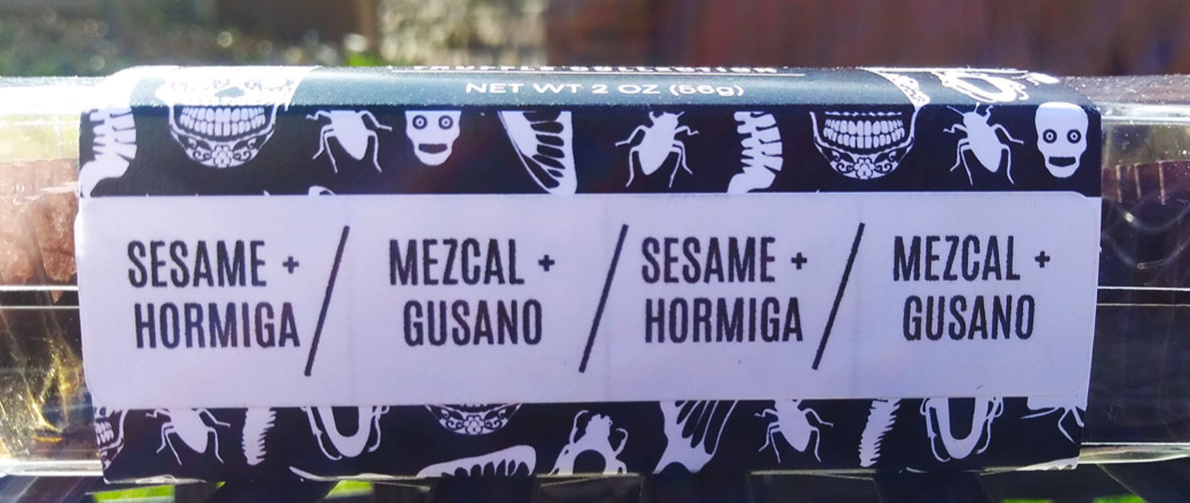

Multi-Legged Supply Chain
And in case you’re picturing Damaris boarding a plane and bringing back insects from lands afar, it turns out access to insects can be a lot less complicated. Cultura works with Rocky Mountain Microranch, Colorado’s first edible insect farm.
They farm crickets and mealworms and import ants and locust. On their website you can also find Galleria (which is larvae of the honeycomb moth), locust, and scorpion.
RMMR’S mission is to produce delicious, nutritious food by using feed sourced from high quality food waste, and their practices put equal emphasis on animal welfare, environmental impact, and each product’s end result.

Rocky Mountain Microranch isn’t the only place producing insects. In Toulouse, France, insects and worms are supplied by MicroNutris, a company formed in 2011. According to a 2013 article in The Guardian, French chocolate-maker Sylvain Musquar incorporates insects into some of his chocolates, and he uses MicroNutris as his sourcing company.
Click the pic for more…
“You mustn’t fix your eyes too much on them, or pay too much attention, otherwise you won’t eat them,” Musquar said.
But the article also tells us the crickets are raised for eight weeks, and the mealworms for twelve weeks, during which they are fed a diet rich in vitamins, minerals, and saturated fatty acids, which means they are loaded with protein.
Cedric Auriol, MicroNutris’s founder, told Le Monde, “We began producing insects after a 2013 United Nations report on food and agriculture suggested they might be the solution to hunger in the world.”
This report, officially called the 2013 Report Edible Insects: Future Prospects for Food and Feed Security, popped up numerous times during my research for this article, and many people are taking what the U.N. reported to heart (concerning why we should consume insects) by either eating, farming, or investing in the future of insects as an edible source. A BBC News article broke down several of the main reasons given by the United Nations as to why eating insects is a positive move forward:
- Insects are nutritious, with high protein, fat and mineral content.
- They are particularly important as a food supplement for undernourished children.
Insects are also “extremely efficient” in converting feed into edible meat. Crickets, for example, need 12 times less feed than cattle to produce the same amount of protein, according to the report. - Most insects are likely to produce fewer environmentally harmful greenhouse gases than other livestock.
- The ammonia emissions associated with insect-rearing are far lower than those linked to conventional livestock such as pigs.
- The use of insects on a large scale as a feed ingredient is technically feasible, and established companies in various parts of the world are already leading the way.
- It calls for improved regulation and production for using insects as feed.
The report also mentions that, in some places, certain insects are considered delicacies. For example, some caterpillars in southern Africa are seen as luxuries, commanding high prices. The food industry can help in “raising the status of insects” by including them in new recipes and adding them to restaurant menus as well.
Touting the benefits to eating them is easy enough — just look at the graph below, pulled from the same 2013 BBC News article, to see how much protein is packed into one of these lil’ critters.

SOURCE: MONTANA STATE UNIVERSITY
Also, it’s only a few clicks away on the web to order chocolate covered insects and have them mailed directly to your doorstep. Now that’s an unforgettable goodie bag addition for your next party. Assuming your theme is… I don’t know, safari-related… Indiana Jones… or maybe Dora the Explorer?
No guarantee on the chocolate quality, however, unless you start with Cultura’s Insect Truffle Collection or something similar, where you know you’re getting quality bugs and chocolate!
The article does note that, in places like Israel, crickets, fruit flies, grasshoppers, and mealworms are all being cultivated for use in consumer food products. And grasshopper farms like Israel’s Hargol says they are racing to increase the production capacity of their operations as demand for this alternative protein is higher than current supply.
But the article goes on to tell us —
The Food and Agriculture Organization of the U.N. (FAO) estimates that commercial animal feed production will need to increase by 70% by 2050 to meet the growing demand for protein. Currently livestock and farm-raised fish feed on a mix of pasture, corn, soy, wild fish and other grains, which represent around 60% to 70% of a producer’s costs, according to FAO.
Insects are a natural diet for many fish but can also provide the high levels of protein livestock farmers want for their cattle to promote animal growth.
One thing is for certain, whether it’s a cricket on your dinner plate or a grasshopper ground into livestock feed, the health and cost benefits are enormous, as well as the benefits to the environment. Take a step back, and it sounds like these lil’ creatures aren’t so little after all!
SOURCES
U.N. REPORT
http://www.fao.org/docrep/018/i3253e/i3253e00.htm
MISCELLANEOUS
https://travel.usnews.com/gallery/countries_that_eat_bugs
https://www.theguardian.com/lifeandstyle/2013/oct/14/insect-chocolates-take-off-france
https://www.bbc.com/news/world-22508439
https://agfundernews.com/funding-insect-startups-slow-start-despite-demand.html/

